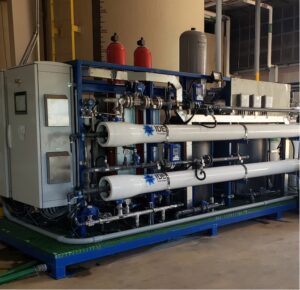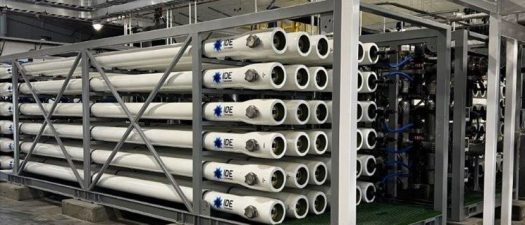Across industries, the move toward sustainability is no longer optional — it’s essential. .
Solving RO Challenges: Pulse Flow Technology for Optimal Water Recovery

Reverse Osmosis (RO) has revolutionized water treatment, offering a highly effective method for removing impurities since its official introduction in the 1960s. Its impact on improving water availability, quality, and global sustainability is undeniable. However, in the pursuit of high water recovery, conventional reverse osmosis faces limitations.
What’s the Problem with Conventional Reverse Osmosis?
The main limitations to high recovery in water reuse using conventional RO operation are derived from:
Membrane Fouling – The accumulation of suspended deposits on the surfaces of the membranes. Due to low velocity of the brine flow, these particles tend to clog the membrane. High recovery operation means small brine flow, which in turn leads to membrane clog. This is one of the contradictions which do not allow conventional RO to operate at high recovery. In addition, frequent membrane fouling requires more frequent cleaning, frequent membranes replacements, increased maintenance costs, and decreased overall system efficiency.
Membrane Biofouling – Biofouling refers to the accumulation of living organisms, such as bacteria and algae, on surfaces of the membranes. Biofouling is often initiated by the presence of nutrition. The attachment of microorganisms to surfaces is followed by the growth and colonization of a larger mass of organisms. The membrane serves as a perfect home for the bacteria because it provides stable velocity and stable osmotic pressure. Bacteria love stability and prosper under such conditions. Biofouling can reduce waterflux, increase energy consumption, and lead to the degradation of water quality.
Membrane Scaling – Scaling occurs when dissolved minerals such as calcium, magnesium, sulfate, silica or carbonates, precipitate and form solid deposits on surfaces. Scaling is often the result of high mineral content in water combined with high recovery. As dissolved minerals are concentrated during the RO process, some minerals, such as Calcium Carbonate (CaCO3), become less soluble and form solid-scale deposits. Such scaling reduces membrane performance and efficiency.
IDE, a world leader in desalination and water treatment solutions, has developed an innovative technology that overcomes these challenges.
Pulse Flow RO – A Game Changer Desalination Technology
Pulse Flow Reverse Osmosis technology (PFRO) is a single stage process that discharges the brine flow periodically, in a pulse flow process; a small volume of brine flow is discharged at high velocity for a short time. This pulse approach solves the contradiction unavoidable in conventional RO.
How Does PFRO Work?
In conventional RO, aiming for high recovery involves multiple stages. This staged approach is necessary to keep a minimum allowable brine flow of 3-4m3/hr at the end of the membrane in a single stage. PFRO operates differently as a single-stage process. It discharges brine at 14-16 m3/hr, but in short, few-second periodic pulses, followed by a long period of 100% recovery, without brine discharge. Short cycles of concentration and intensive flush (shorter than induction time) allow it to reach extremely high supersaturation of dissolved minerals and prevent crystal formation. This allows PFRO to reach recovery significantly higher than conventional RO can.
In conventional RO, the flow velocity and salt concentration in each part of the pressure vessel remains constant for years. However, PFRO introduces sharp, high-velocity pulses of brine each time the brine valve opens, and sharp increase in salt concentration preventing organism reproduction.

PFRO – A Single-Stage Technology With Many Benefits
This innovative method for operating reverse osmosis water reuse systems offers many benefits to our customers:
Highest Recovery:
- PFRO achieves significantly higher solute concentration in the brine flow and higher recovery, preventing biofouling and scaling.
Lower CapEx & Opex:
- Reduced power consumption and pressure drops due to non-continuous brine pumping.
- Fewer pressure vessels and membranes reduce costs.
- No brine recycling leads to lower power consumption and increased efficiency.
Modularity & Scalability:
- PFRO can be designed into new plants or retrofitted into existing facilities.
- PFRO can be applied as a standalone system from start to finish or in parallel to conventional RO systems. In one of IDE’s recent projects, a large semiconductor facility installed a PFRO system in parallel to a conventional RO system, achieving 25% recovery with the conventional system while PFRO operated at an impressive 50% recovery.
IDE’s Pulse Flow RO stands as a groundbreaking technology, offering a single-stage solution that not only overcomes the limitations of conventional RO but also enhances recovery rates and sustainability in water treatment.
Learn how to enhance brine minimization, maximize recovery, and minimize costs. with PFRO

















